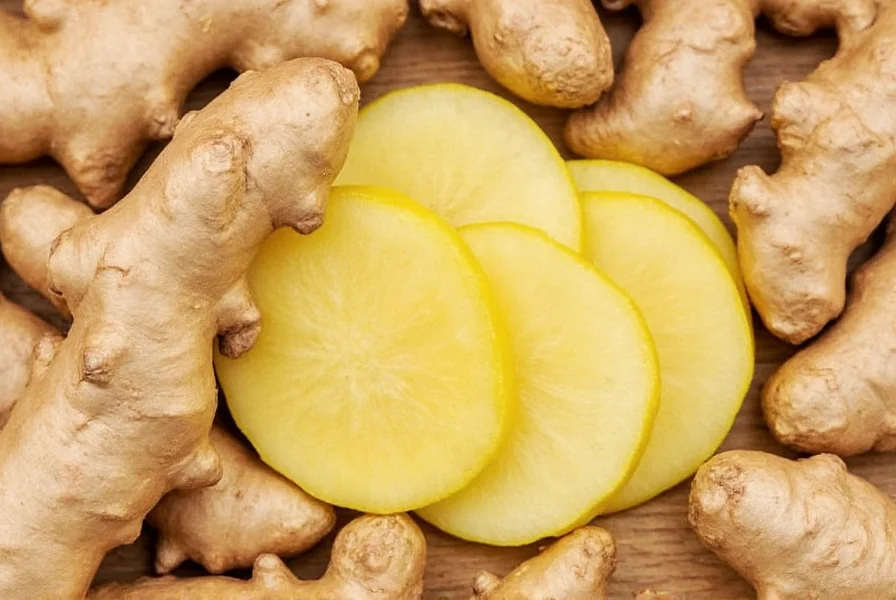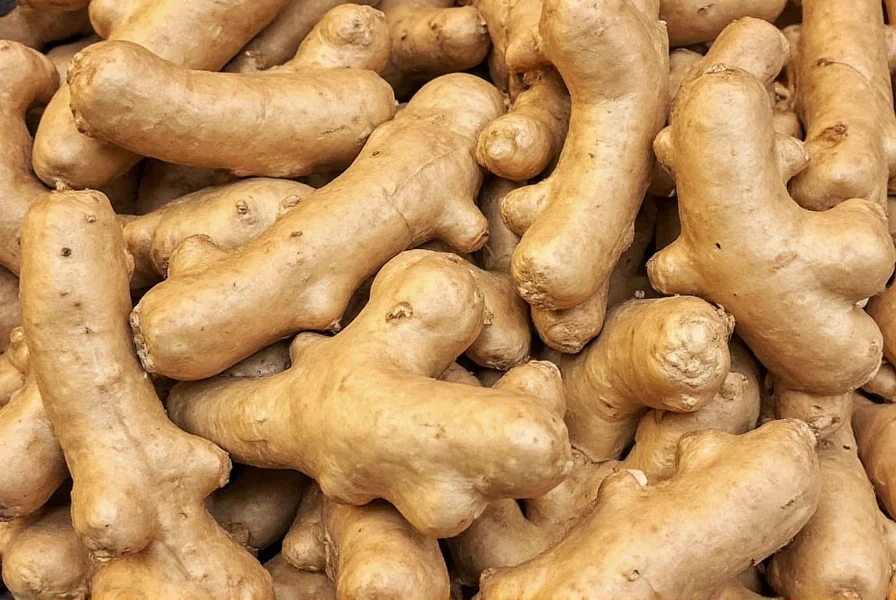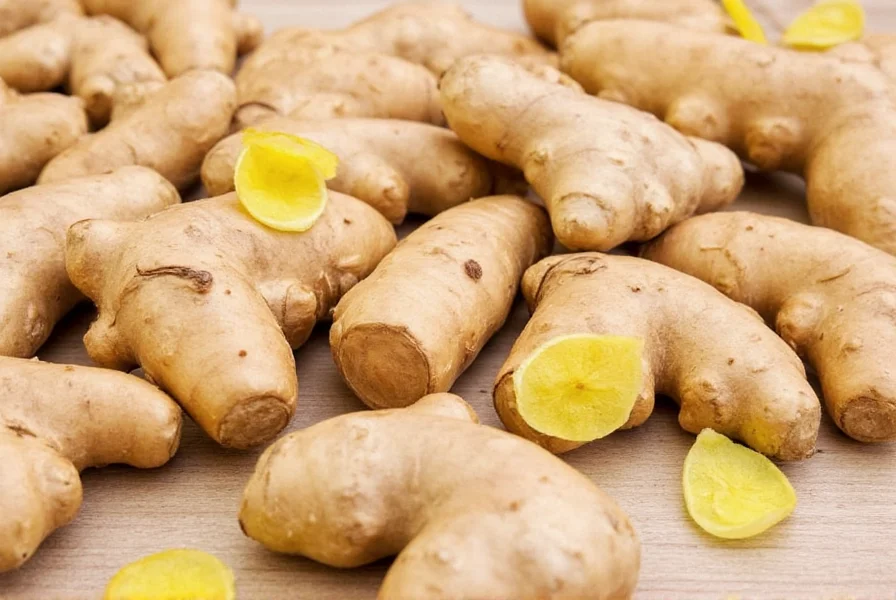Ginger roots have been valued across global culinary and wellness traditions for millennia. Understanding their botanical nature, practical applications, and evidence-based benefits helps maximize their potential in daily life. This comprehensive guide explores ginger roots beyond superficial knowledge, providing actionable information for selection, use, and cultivation.
Understanding Ginger Root Botany
Ginger roots represent a common misnomer—they're actually rhizomes, horizontal underground stems that store nutrients and enable plant propagation. The ginger plant (Zingiber officinale) grows 2-3 feet tall with narrow leaves and yellow-green flowers, but the valuable part develops below ground. These rhizomes feature segmented 'fingers' growing from a central 'hand,' with each segment capable of producing new growth.
Three primary ginger root varieties dominate global production:
| Variety | Characteristics | Primary Regions |
|---|---|---|
| Chinese White | Smooth skin, mild flavor, high yield | China, Australia, Hawaii |
| Indian Black | Thicker skin, stronger flavor, more fibrous | India, Jamaica, Nigeria |
| African | Large size, moderate pungency, high essential oil content | Nigeria, Cameroon, Sierra Leone |
Selecting Quality Ginger Roots
Choosing optimal ginger roots requires attention to specific physical characteristics. Fresh specimens should feel heavy for their size, indicating high moisture content and freshness. The skin should appear taut and smooth, without wrinkles, shriveling, or soft spots which indicate aging or spoilage. When gently squeezed, quality ginger roots maintain firmness throughout.
Examine the growth nodes (eyes) which should appear plump and slightly moist, not dried or moldy. For culinary applications requiring delicate flavor, select smaller fingers with thinner skin. Larger, more mature rhizomes offer stronger flavor preferred for medicinal preparations. Organic ginger roots typically display slightly rougher skin texture but contain comparable gingerol levels to conventionally grown varieties.

Proper Storage Techniques
Maximizing ginger root shelf life requires appropriate storage methods based on intended usage timeline. For short-term storage (1-2 weeks), keep unpeeled ginger roots in a cool, dark pantry away from direct sunlight. The ideal temperature range is 50-60°F (10-15°C) with moderate humidity.
For extended preservation (3-4 weeks), refrigeration proves more effective. Wrap whole ginger roots in paper towels to absorb excess moisture, then place inside a resealable plastic bag with the air expelled. Store in the vegetable crisper drawer. Never wash ginger roots before storage, as moisture accelerates spoilage.
Freezing provides the longest preservation method while maintaining flavor compounds. Peel and slice ginger roots into 1-inch pieces, then store in an airtight container or vacuum-sealed bag. Frozen ginger roots maintain quality for 6-8 months and can be grated directly from frozen for cooking applications.
Nutritional Composition and Health Properties
Ginger roots contain over 400 distinct biochemical compounds, with gingerols and shogaols representing the primary bioactive constituents. A 2-inch piece (approximately 15g) of fresh ginger root provides:
- 11 calories
- 0.2g protein
- 2.4g carbohydrates
- 0.6g dietary fiber
- 10% of daily manganese requirement
- Trace amounts of potassium, magnesium, and vitamin B6
Research published in the Journal of Medicinal Food demonstrates that ginger roots' anti-inflammatory properties stem from gingerol's ability to inhibit cyclooxygenase and lipoxygenase pathways. Multiple clinical trials support ginger roots' effectiveness for nausea management, particularly during pregnancy and chemotherapy. However, evidence for weight loss claims remains limited to preliminary studies requiring further validation.
Culinary Applications and Preparation
Understanding how to properly prepare ginger roots enhances both flavor extraction and nutritional availability. The concentration of volatile compounds varies across the rhizome, with the highest gingerol content found near the growth nodes. For maximum flavor impact, grate ginger roots using a microplane rather than chopping, which releases more essential oils.
Different preparation methods affect ginger roots' chemical composition:
- Fresh: Highest gingerol content, sharp flavor profile
- Dried: Gingerol converts to zingerone, milder sweetness
- Cooked: Gingerol transforms to shogaols, increased pungency
- Fermented: Creates new bioactive compounds with enhanced bioavailability
When substituting fresh ginger roots for powdered ginger in recipes, use 1 tablespoon fresh grated ginger for every 1/4 teaspoon ginger powder. For preserving maximum nutritional value, add ginger roots during the final 5-10 minutes of cooking, as prolonged heat exposure degrades certain volatile compounds.

Growing Ginger Roots at Home
Cultivating ginger roots requires specific environmental conditions but proves achievable in controlled settings. The ideal growing medium consists of 60% compost, 30% coconut coir, and 10% perlite, maintaining consistent moisture without waterlogging. Ginger roots prefer dappled sunlight or partial shade, with optimal temperatures between 71-86°F (22-30°C).
Plant ginger root segments with visible growth nodes facing upward, covering with 1-2 inches of soil. Water when the top inch of soil feels dry, avoiding saturation. In temperate climates, ginger roots require 8-10 months of growth before harvest, with peak flavor developing around the 10-month mark. Harvest by carefully digging around the plant perimeter and lifting the entire rhizome cluster.
Common Misconceptions Clarified
Several persistent myths surround ginger roots that warrant clarification based on current research. While often called "ginger root," the correct botanical term is rhizome, an underground stem rather than a true root. The belief that older, more fibrous ginger roots contain higher concentrations of beneficial compounds lacks scientific support—studies show comparable gingerol levels across maturity stages.
Another common misconception suggests peeled ginger roots lose significant nutritional value. Research indicates that while some surface compounds diminish, the core bioactive components remain largely unaffected by peeling. The notion that organic ginger roots offer substantially greater health benefits than conventional varieties remains unsupported by comparative phytochemical analyses.











 浙公网安备
33010002000092号
浙公网安备
33010002000092号 浙B2-20120091-4
浙B2-20120091-4